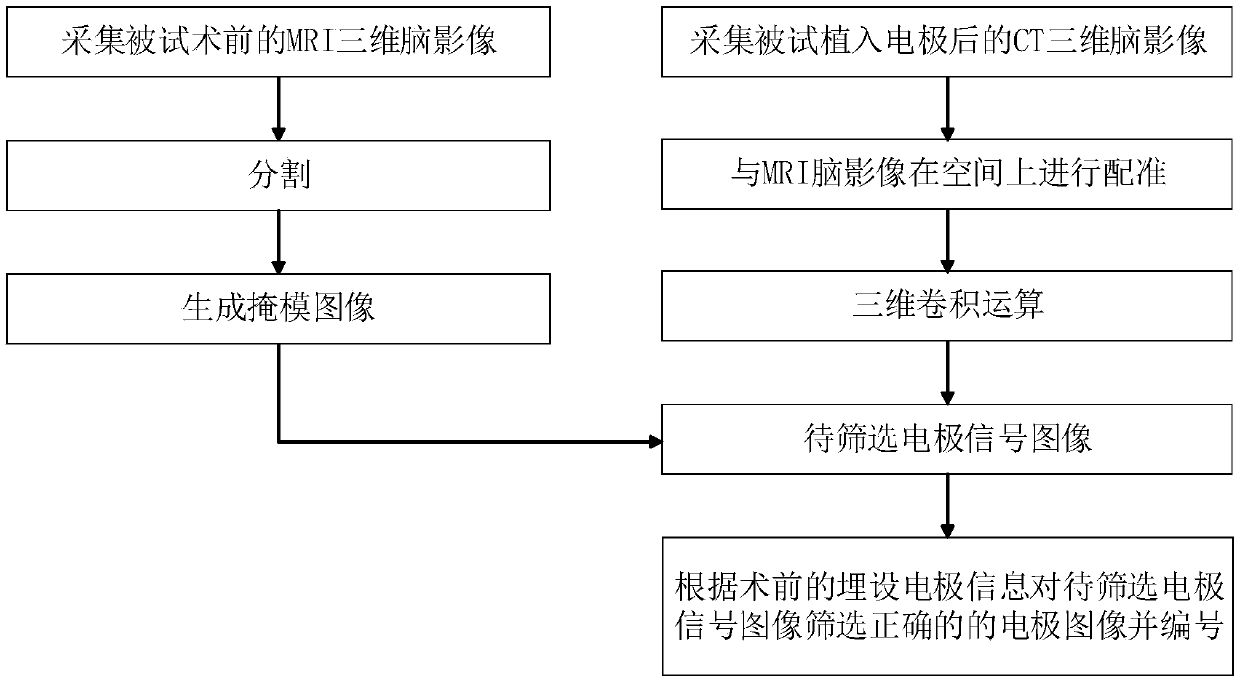Human-computer interaction type intracranial electrode positioning method and system based on three-dimensional convolution
A technology of three-dimensional convolution and positioning method, applied in the field of basic research of brain science, can solve the problems of time-consuming, three-dimensional image noise interference, and error-prone, and achieve the effect of simple and fast algorithm implementation, efficient and accurate positioning, and convenient manual marking.
- Summary
- Abstract
- Description
- Claims
- Application Information
AI Technical Summary
Problems solved by technology
Method used
Image
Examples
Embodiment Construction
[0036] like figure 1 As shown, the implementation steps of the human-computer interactive intracranial electrode positioning method based on three-dimensional convolution in this embodiment include:
[0037] 1) Acquisition of preoperative MRI three-dimensional brain images and CT three-dimensional brain images after electrode implantation, and spatial registration of CT brain images and MRI brain images;
[0038]2) In the individual space, the MRI brain image is divided into five parts: gray matter, white matter, cerebrospinal fluid, dura mater and skull, and the three regions of gray matter, white matter and cerebrospinal fluid or the four regions of gray matter, white matter, cerebrospinal fluid and dura mater are combined as The target area of the detection electrode is used as a mask image; the three-dimensional convolution operation is performed on the registered CT brain image to specifically distinguish the image signal of the intracranial electrode from other bright ...
PUM
 Login to View More
Login to View More Abstract
Description
Claims
Application Information
 Login to View More
Login to View More - R&D
- Intellectual Property
- Life Sciences
- Materials
- Tech Scout
- Unparalleled Data Quality
- Higher Quality Content
- 60% Fewer Hallucinations
Browse by: Latest US Patents, China's latest patents, Technical Efficacy Thesaurus, Application Domain, Technology Topic, Popular Technical Reports.
© 2025 PatSnap. All rights reserved.Legal|Privacy policy|Modern Slavery Act Transparency Statement|Sitemap|About US| Contact US: help@patsnap.com



